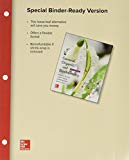
Concept explainers
(a)
Interpretation:
Balanced equation for the complete combustion of pentane has to be written.
Concept Introduction:
Combustion reaction in general is said to be burning in presence of oxygen.
(a)
Explanation of Solution
Given hydrocarbon is pentane. Molecular formula of pentane is
Balancing carbon atom: In the product side, only one mol of carbon atom is present while in the reactant side, five mol of carbon atoms are present. This can be balanced by adding coefficient 5 before
Balancing hydrogen atoms: In the product side, there are two mol of hydrogen atoms, while in the reactant side, there are twelve mol hydrogen atoms. Adding coefficient 6 before water in the product side balances out hydrogen atoms on both sides of equation. The chemical equation obtained is,
Balancing oxygen atoms: In the product side, there are sixteen mol oxygen atoms, while in the reactant side, there are only two mol oxygen atoms. Adding coefficient 8 before
(b)
Interpretation:
Balanced equation for the complete combustion of hexane has to be written.
Concept Introduction:
Refer part (a).
(b)
Explanation of Solution
Given hydrocarbon is hexane. Molecular formula of hexane is
Balancing carbon atom: In the product side, only one mol of carbon atom is present while in the reactant side, six mol of carbon atoms are present. This can be balanced by adding coefficient 6 before
Balancing hydrogen atoms: In the product side, there are two mol of hydrogen atoms, while in the reactant side, there are fourteen mol hydrogen atoms. Adding coefficient 7 before water in the product side balances out hydrogen atoms on both sides of equation. The chemical equation obtained is,
Balancing oxygen atoms: In the product side, there are nineteen mol oxygen atoms, while in the reactant side, there are only two mol oxygen atoms. Adding coefficient 9.5 before
Multiplying the above equation by 2 gives whole numbers for all the compounds. This can be given as,
(c)
Interpretation:
Balanced equation for the complete combustion of octane has to be written.
Concept Introduction:
Refer part (a).
(c)
Explanation of Solution
Given hydrocarbon is octane. Molecular formula of octane is
Balancing carbon atom: In the product side, only one mol of carbon atom is present while in the reactant side, eight mol of carbon atoms are present. This can be balanced by adding coefficient 8 before
Balancing hydrogen atoms: In the product side, there are two mol of hydrogen atoms, while in the reactant side, there are eighteen mol hydrogen atoms. Adding coefficient 9 before water in the product side balances out hydrogen atoms on both sides of equation. The chemical equation obtained is,
Balancing oxygen atoms: In the product side, there are twenty five mol oxygen atoms, while in the reactant side, there are only two mol oxygen atoms. Adding coefficient 12.5 before
Multiplying the above equation by 2 gives whole numbers for all the compounds. This can be given as,
(d)
Interpretation:
Balanced equation for the complete combustion of ethane has to be written.
Concept Introduction:
Refer part (a).
(d)
Explanation of Solution
Given hydrocarbon is ethane. Molecular formula of ethane is
Balancing carbon atom: In the product side, only one mol of carbon atom is present while in the reactant side, two mol of carbon atoms are present. This can be balanced by adding coefficient 2 before
Balancing hydrogen atoms: In the product side, there are two mol of hydrogen atoms, while in the reactant side, there are six mol hydrogen atoms. Adding coefficient 3 before water in the product side balances out hydrogen atoms on both sides of equation. The chemical equation obtained is,
Balancing oxygen atoms: In the product side, there are seven mol oxygen atoms, while in the reactant side, there are only two mol oxygen atoms. Adding coefficient 3.5 before
Multiplying the above equation by 2 gives whole numbers for all the compounds. This can be given as,
Want to see more full solutions like this?
Chapter 10 Solutions
Package: Loose Leaf General, Organic, And Biochemistry With Connect 2-semester Access Card
 ChemistryChemistryISBN:9781305957404Author:Steven S. Zumdahl, Susan A. Zumdahl, Donald J. DeCostePublisher:Cengage Learning
ChemistryChemistryISBN:9781305957404Author:Steven S. Zumdahl, Susan A. Zumdahl, Donald J. DeCostePublisher:Cengage Learning ChemistryChemistryISBN:9781259911156Author:Raymond Chang Dr., Jason Overby ProfessorPublisher:McGraw-Hill Education
ChemistryChemistryISBN:9781259911156Author:Raymond Chang Dr., Jason Overby ProfessorPublisher:McGraw-Hill Education Principles of Instrumental AnalysisChemistryISBN:9781305577213Author:Douglas A. Skoog, F. James Holler, Stanley R. CrouchPublisher:Cengage Learning
Principles of Instrumental AnalysisChemistryISBN:9781305577213Author:Douglas A. Skoog, F. James Holler, Stanley R. CrouchPublisher:Cengage Learning Organic ChemistryChemistryISBN:9780078021558Author:Janice Gorzynski Smith Dr.Publisher:McGraw-Hill Education
Organic ChemistryChemistryISBN:9780078021558Author:Janice Gorzynski Smith Dr.Publisher:McGraw-Hill Education Chemistry: Principles and ReactionsChemistryISBN:9781305079373Author:William L. Masterton, Cecile N. HurleyPublisher:Cengage Learning
Chemistry: Principles and ReactionsChemistryISBN:9781305079373Author:William L. Masterton, Cecile N. HurleyPublisher:Cengage Learning Elementary Principles of Chemical Processes, Bind...ChemistryISBN:9781118431221Author:Richard M. Felder, Ronald W. Rousseau, Lisa G. BullardPublisher:WILEY
Elementary Principles of Chemical Processes, Bind...ChemistryISBN:9781118431221Author:Richard M. Felder, Ronald W. Rousseau, Lisa G. BullardPublisher:WILEY





